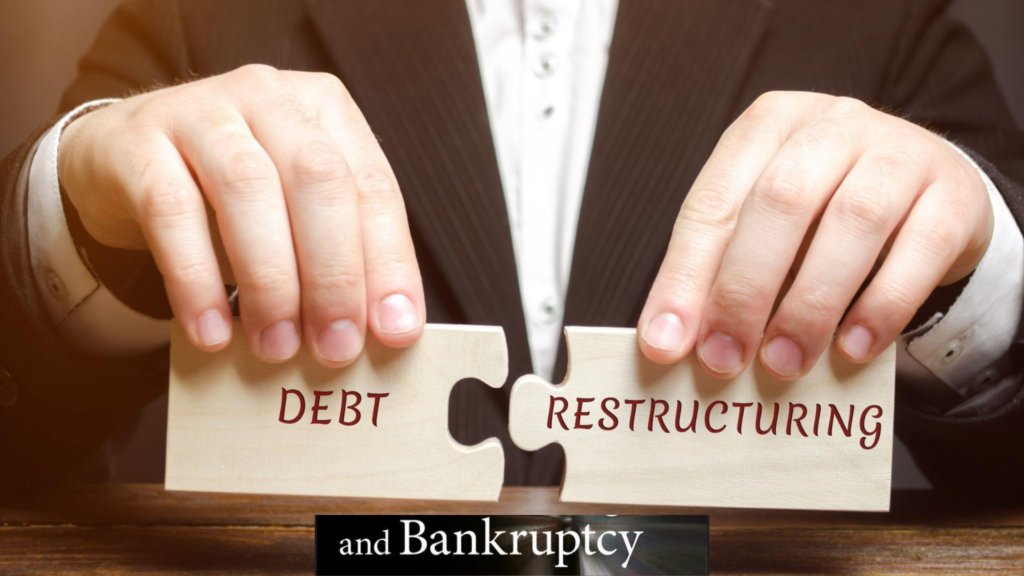It is unavoidable to experience financial struggles in business, and often, some companies may be unable to pay off their debt. However, one solution that many companies turn to is corporate debt restructuring.
This is a process where a company renegotiates or changes the terms of its debt agreements to ensure that it can continue running and still fulfill its obligations to creditors. Corporate debt restructuring provides a lifeline that keeps the business afloat by reorganizing the company’s financial structure without going through the extreme means of bankruptcy.
But how exactly does corporate debt restructuring work? How many types are there? What are the pros and cons? Let’s find out.
What Is Corporate Debt Restructuring?
Corporate debt restructuring is a process whereby a financially troubled business reorganizes its outstanding debt commitments to restore liquidity and stability in its finances and stay in business. The goal is to avoid bankruptcy by renegotiating terms with creditors.
This could include extending repayment deadlines, reducing the interest rate on loans, or converting debt into equity. The arrangement helps struggling businesses manage their debt better, allowing them to continue operating as they work towards paying off their debts.

This arrangement is often preferred by the company and the creditors involved because it prevents the expensive, stressful, and time-consuming process of filing for bankruptcy. There are many reasons for loan restructuring.
Some of them include cash flow problems, market conditions, avoiding bankruptcy, and debt overload. Additionally, specialized debt restructuring companies work with businesses to develop strategies for renegotiating debt.
These firms facilitate negotiations between the company and creditors, offering expertise in financial reorganization and crisis management. Their job is to ensure all parties reach a mutually beneficial agreement while helping the company stabilize its finances.
ALSO READ: 5 Effective Strategies for Living a Debt-Free Life
How Does Corporate Debt Restructuring Work?
Debt restructuring is a process that involves the company and its creditors coming together to find a mutually agreeable solution to manage the outstanding debt. Here’s how it works:
Assessment of Financial Situation
The first step is for the company to review its financial situation, paying special attention to cash flow, debts, and assets. This makes it easier to decide whether restructuring is necessary and how much flexibility the company has to negotiate for better terms.
Negotiation With Creditors
Once the need for restructuring has been decided, the company enters into negotiations with creditors, including banks, bondholders, and suppliers. These discussions may involve reducing interest rates, extending payment deadlines, or, in some cases, reducing the overall amount owed.

Execution of New Agreements
After negotiations, the company and creditors agree on a new debt repayment plan. This agreement is legally binding and typically involves formalizing the new terms in written contracts.
Monitoring and Adjustment
Even after restructuring, the company must closely monitor its financial performance to make sure it complies with the new terms. Adjustments may still be needed in the future, depending on market conditions and business performance.
Here’s an excellent corporate debt restructuring example:
Let’s say a retail company with $20 million in debt is having serious difficulties meeting its cash flow needs because of a significant drop in consumer spending. The business renegotiates with its creditors to restructure the debt by agreeing to an extension in payment terms and a reduced interest rate.
Then, the business goes on to raise money by selling off some of its underperforming stores and then uses that money to settle part of the debt. This restructuring plan allows the company to stay in business, avoid bankruptcy, and eventually recover when market conditions improve.
Types of Corporate Debt Restructuring
There are several approaches to corporate debt restructuring; here are a few common types:
Debt-to-Equity Swap
A debt-to-equity swap is an agreement between creditors and the company whereby some or all of the creditors’ debt is exchanged for company equity. This reduces the amount of debt owed by the company and gives creditors a share in the future success of the business.
Extension of Loan Terms
In many cases, creditors agree to extend the repayment period of the loan in order to give the company more time to recover financially. This may involve reducing the monthly payments or postponing payments for a period of time.

Reduction in Interest Rates
Sometimes creditors agree to reduce the interest rates on outstanding debts. Lowering the rates can greatly reduce the company’s debt service load, making it easier to manage cash flow.
Asset Sales
Companies may sell off non-core assets, like real estate or subsidiaries, in order to raise money and reduce debt. The proceeds from the sale are used to settle outstanding debt, so the company can focus once again on its primary operations.
Corporate Debt Restructuring vs. Bankruptcy: A Comparison
When a company experiences financial difficulties, it may seem that bankruptcy is the only option, but corporate debt restructuring can sometimes be a better alternative. Let’s compare the two:
Corporate Debt Restructuring:
In this arrangement, companies work with creditors to negotiate new terms without court involvement. The company can also continue to operate, thereby preserving jobs and minimizing disruptions.
Since restructuring is often carried out behind closed doors, this can prevent negative publicity and scrutiny. Additionally, restructuring can save you a lot of legal fees and other expenses related to bankruptcy.

Bankruptcy
In a Chapter 11 bankruptcy, the court oversees the process, which can be prolonged and complicated. Management may also lose control of the company as trustees are appointed to supervise operations.
Another bankruptcy effect is that the company may be forced to liquidate its assets or face closure. While bankruptcy offers protection from creditors, it’s usually seen as a last resort because of its negative impact on a company’s credit and reputation. In most cases, businesses prefer restructuring over bankruptcy because it provides an opportunity for stability without the severe consequences of a bankruptcy filing.
ALSO READ: Top 10 Restaurants Filing for Bankruptcy This Year
Corporate Debt Restructuring Pros and Cons
Like any financial solution, corporate debt restructuring has its advantages and disadvantages. They are:
Pros
- Prevents Bankruptcy: Restructuring helps a company avoid taking the drastic step of filing for bankruptcy, which helps to protect the company’s reputation and minimize disruptions.
- Improves Cash Flow: A company can enhance its cash flow by adjusting the repayment terms, which will make it easier to invest in operations or cover other essential costs.
- Flexible Solutions: Restructuring can be adjusted to meet the specific needs of the company, whether through asset sales, extended loan terms, or reduced interest rates.

Cons
- Not Always Successful: Restructuring is no guarantee of success. If the company’s core business strategy is flawed, even restructured debt may not be able to save the company from eventual failure.
- Loss of Control: In some cases, creditors may demand control of the company in exchange for new debt terms, which would limit the existing management’s ability to run the business as they see fit.
- Increased Costs: Restructuring can be very expensive, especially when legal fees, consulting costs, and negotiation fees are factored in.
Corporate Debt Restructuring as a Solution
It is important to note that not all debts are the same; there are good debts and bad debts. In this case, we’ve focused on bad debt and the potential for businesses to survive through corporate debt restructuring plans.
So, for businesses looking to manage financial difficulties, restructuring may be the key to survival—just as it can be the last resort before filing for Chapter 11 bankruptcy.

